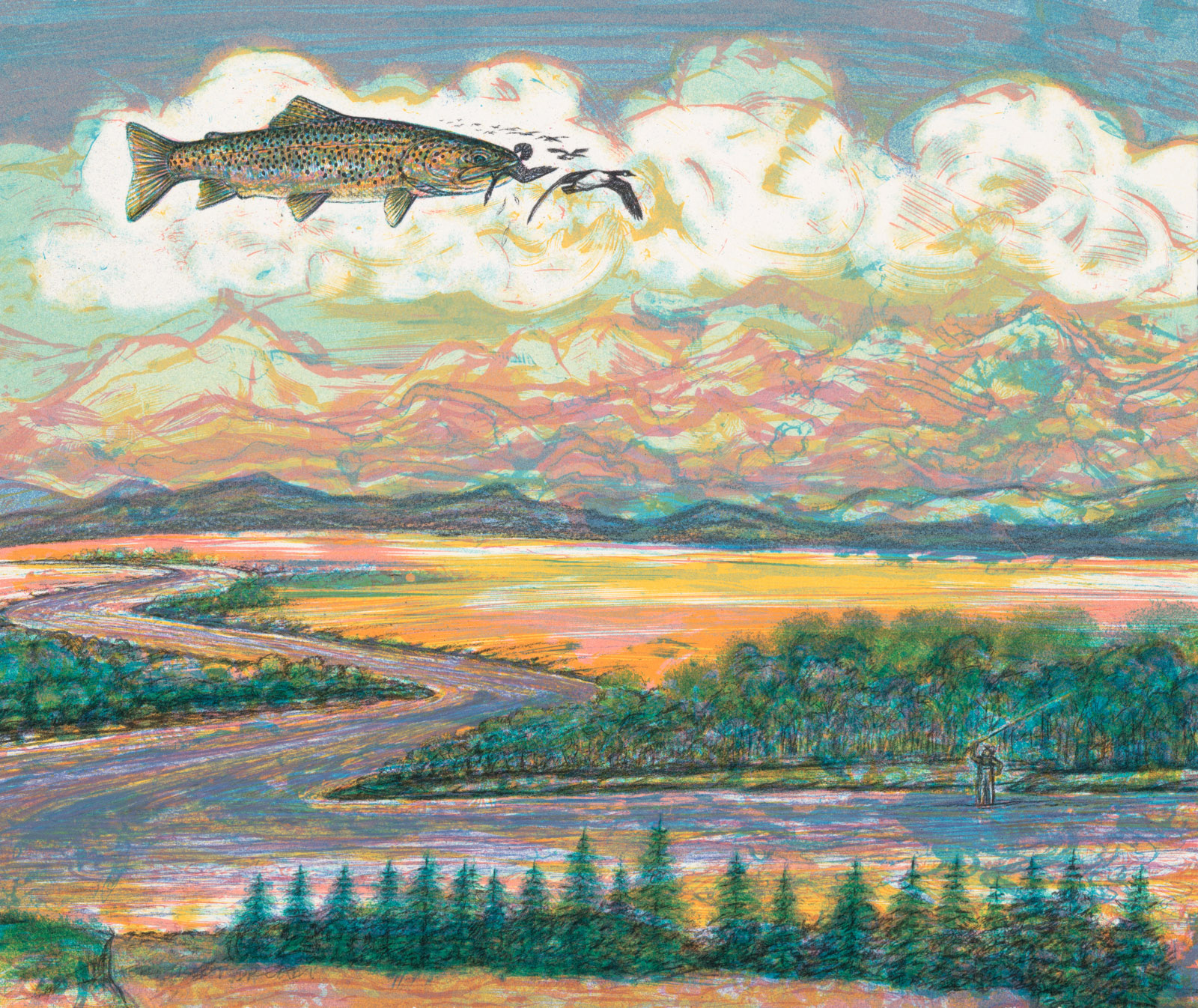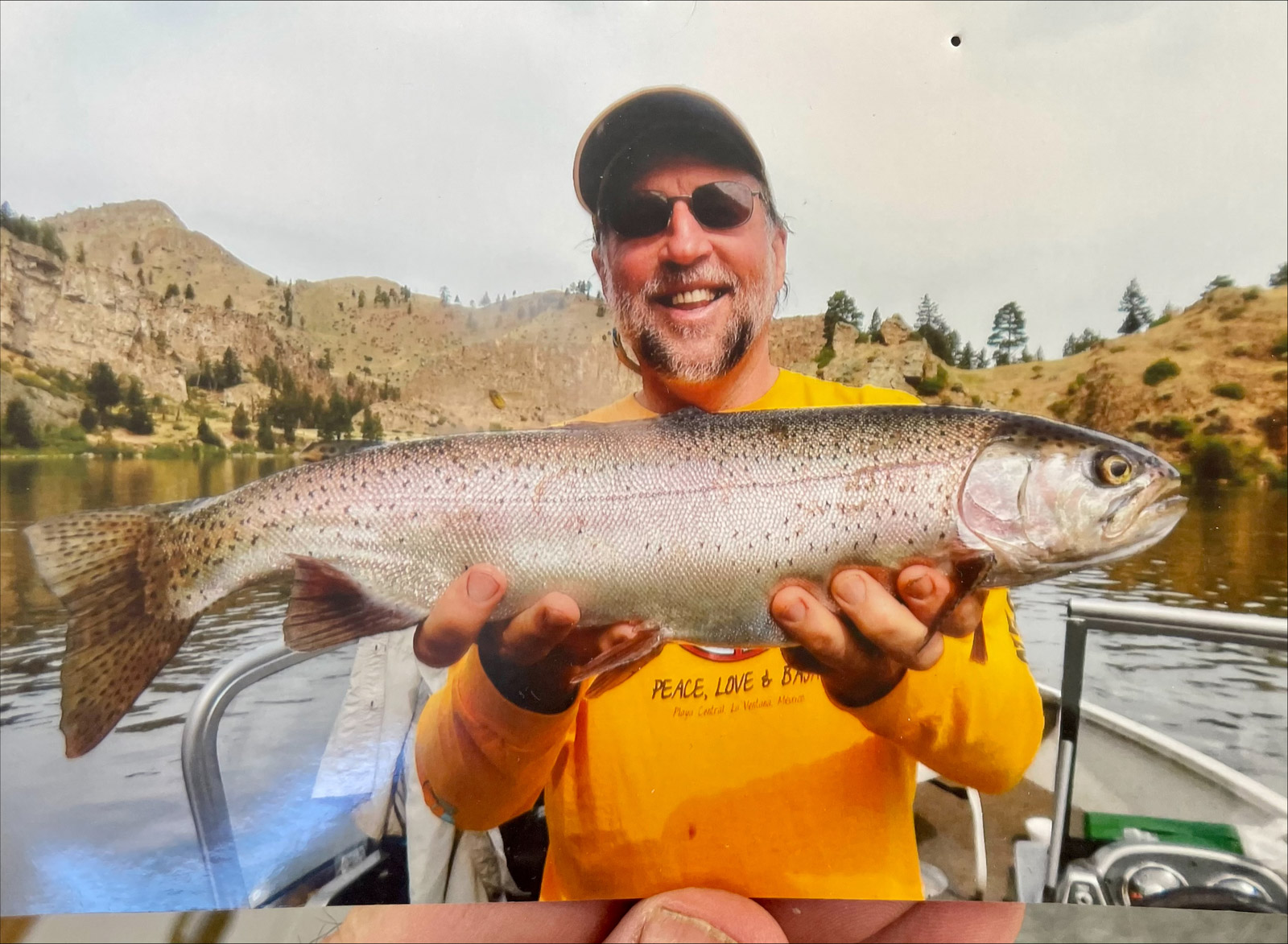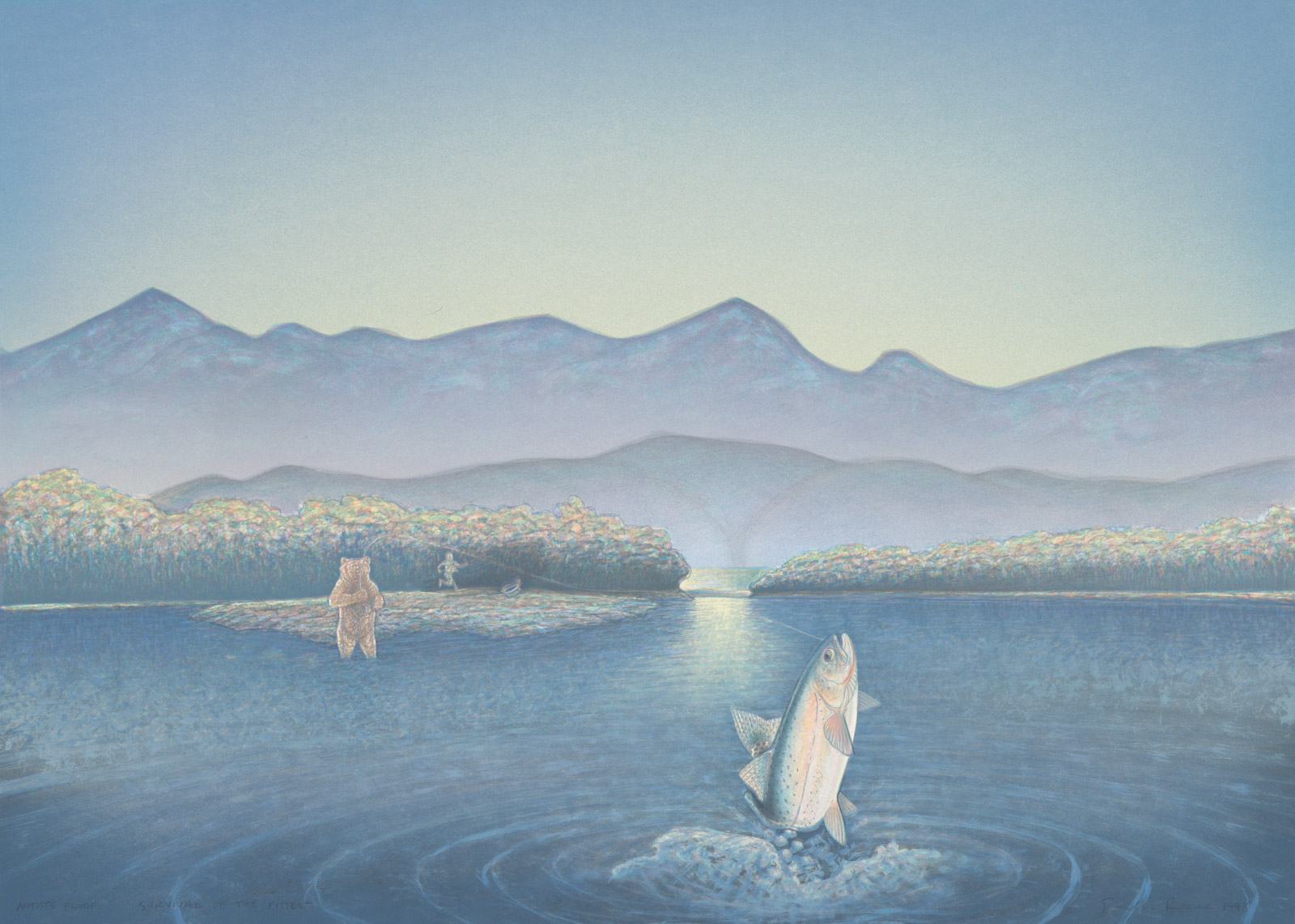Levity & Gravity

by Christian Shane
“I would never categorize myself as an environmental artist, but when the paint dries, I often find that the work is relevant to environmental issues. I sort of dabble in modern mythology by juxtaposing the old myths of the West with the new things that are going on. It’s part of an ancient tradition – that of adding levity to gravity.” – Parks Reece
From elk bugling into phones to whimsical political satires to thoughtful dreamy landscapes to bears riding trout, the art of Livingston artist Parks Reece spans the proverbial spectrum. Together, it forms a sort of wide, colorful net, teeming with curious characters, oversized wildlife, and comical parody. His style is irreverent and wholly his own, and once you see it, you know it forever. I had the chance to chat with Parks about his influences, inspirations, and of course, fly fishing.
CS: Who are your biggest artistic influences?
RP: My mother was a well-known artist where I grew up. And Ruth Shaw, the originator of fingerpainting, made a big impact on me.
Parks explains that in the 1960s, his mother (Gwyn Reece) and Ms. Shaw allowed him to express his artistic skills and experience the creative process. This background of fingerpainting and using his hands through art became a staple and signature of Parks’s works, even up to the present day.

CS: Where do you find your inspiration and ideas?
RP: I’ve always found them in nature. Growing up in the country and spending time out in the woods every day helped.
Parks shares that he grew up fishing for brook trout in the Appalachian creeks of North Carolina with his grandfather. In fact, his grandfather was the president of the Izaak Walton conservation club in the 1930s. They fished together even when his grandfather was well into his 90s. “We would tie a piece of red flannel onto a hook and fish it like a lure,” Parks adds.
CS: What are your favorite places to fish near Livingston and throughout Montana?
RP: Well,I used to fish a lot, pretty much everywhere, but of late have become more of a predator.
Park says that while he is an avid hunter for elk, deer, antelope, and birds, he still gets out on the water occasionally, especially when he fishes the Missouri River in the springtime. He also loves floating and fly fishing the Yellowstone when the salmonflies are out.
Parks recalls teaching his son Myers to fish. On the small creeks around Livingston, Parks and Myers would catch grasshoppers and use them as bait. Parks would hide and watch his son from a distance to be sure he was okay. As time passed, Myers turned into a pretty good angler and outdoor writer and moved onto fly fishing. “Way better than me now,” Parks says with a laugh.
CS: Describe a favorite piece of art that you’ve created.
RP: The last piece I did is my favorite! I’m lucky in that I keep improving and learning and getting better.
Parks is currently working on a series of paintings for a documentary about saving and preserving grizzly-bear habitat, called Return of the Grizzly. One of these pieces graces the movie’s poster, bearing his typically offbeat style: a grizzly bear suspended in space above a blue planet, symbolizing the grizzly’s need to find a home and habitat on Earth.
The coffee-table book, Call of the Wild: The Art of Parks Reece, features a large sampling of the artist’s work, as well as essays by various writers and poets, including his son Myers. This book and Parks’s paintings, both prints and originals, can be purchased through his gallery’s website at parksreece.com.

